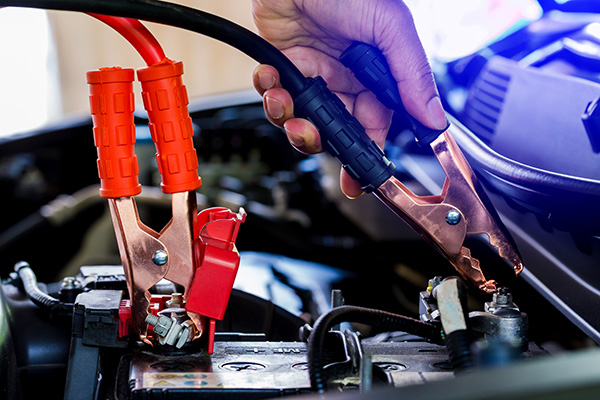
When temperatures drop overnight, your car might start showing problems that weren’t obvious the day before. Maybe it hesitates during startup, a dashboard light flickers on, or the brakes feel a little different. Cold weather doesn’t actually create new problems out of thin air, it just puts extra stress on systems that were already close to failing. What feels fine in mild weather can start acting up when things get frosty.
Battery Trouble Is One of the First Signs
Your car battery works harder in cold weather. At 32°F, it already loses around 20 percent of its power. Drop the temperature further, and the output drops even more. At the same time, your engine takes more power to crank because the oil is thicker. A battery that was just barely getting by in warm weather might not have enough charge to start the car on a cold morning.
Older batteries or ones that haven’t been tested in a while are more likely to struggle. If you hear slow cranking, or if the engine doesn’t catch right away, it could be time for a battery check.
Cold Air Makes Oil Thicker and Slows Circulation
Engine oil needs to flow freely to protect moving parts. On cold mornings, even synthetic oil thickens slightly. That delay in circulation means more metal-on-metal contact during startup, which increases wear. If the oil is old, dirty, or the wrong viscosity for the season, the problem gets worse.
This slow circulation also affects valve timing, turbocharger lubrication, and other parts that depend on quick oil pressure buildup. Over time, that can lead to tapping sounds, poor performance, or increased engine wear.
Tires Lose Pressure Overnight
Tire pressure drops as temperatures fall. For every 10-degree drop in air temperature, tires can lose about one pound per square inch (psi). That might not seem like much, but it adds up quickly if your tires are already a little low. Underinflated tires reduce fuel economy, affect handling, and wear unevenly.
Low pressure also makes tires more vulnerable to pothole damage and rim leaks. If your TPMS light comes on frequently in the winter, it’s worth checking the pressure with a gauge and topping off more often.
Plastic and Rubber Parts Become More Brittle
Cold weather makes rubber seals, hoses, and bushings stiffer and more likely to crack. Windshield wiper blades that were flexible in the summer may harden and smear across the glass instead of clearing it. Engine hoses, belts, and gaskets that are starting to age can shrink slightly in the cold, which leads to leaks or noise.
If your car starts making new squeaks or smells like coolant on a cold morning, you might be looking at a failing seal or a hose that’s begun to split under pressure.
Warning Lights and Sensors May Trigger More Easily
Electronic sensors are more sensitive to voltage drops and temperature shifts. If your battery is weak or if moisture builds up on connectors, you might see the check engine light come on temporarily. Oxygen sensors, mass airflow sensors, and tire pressure monitors are all more likely to trigger faults in cold conditions.
If the light stays on after the engine warms up, it’s worth getting it checked. But if it turns off shortly after driving, it could be a temporary response to the cold. Either way, repeated warnings shouldn’t be ignored.
How to Prepare for Cold-Weather Surprises
Cold mornings will always reveal weaknesses faster than a mild day. That’s why fall and early winter are the best times to stay ahead of issues. If your car has been starting a little slower, or if something just doesn’t feel right when the temperature drops, it’s better to get it inspected before a failure leaves you stranded.
Some simple ways to prepare:
- Get the battery tested, especially if it’s more than three years old
- Check tire pressure weekly during cold spells
- Switch to winter-grade synthetic oil if needed
- Inspect belts and hoses for cracks or soft spots
- Keep the fuel tank at least half full to prevent condensation
- Replace worn wipers to improve visibility
These basic checks can go a long way toward keeping your car reliable through winter.
Winter Prep and Diagnostics at Palo Alto Shell in Palo Alto, CA
At Palo Alto Shell, we help local drivers get ready for cold mornings with battery checks, fluid inspections, and diagnostics designed to catch small problems before they grow.
If your car is starting to act up with the change in temperature, schedule a visit with our team today and make sure it’s ready for the road ahead.